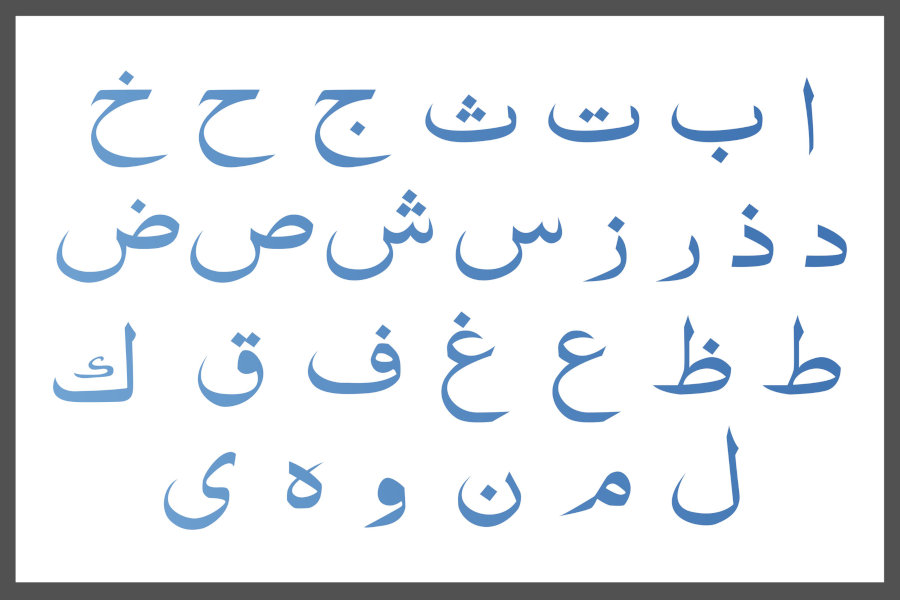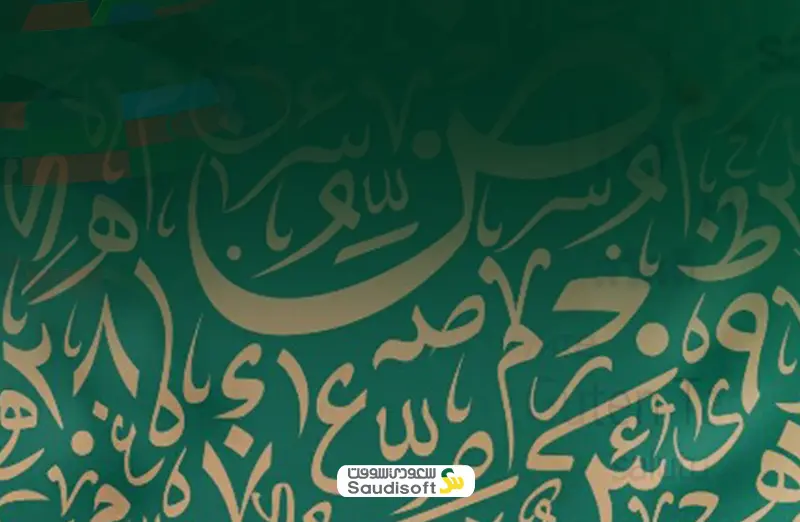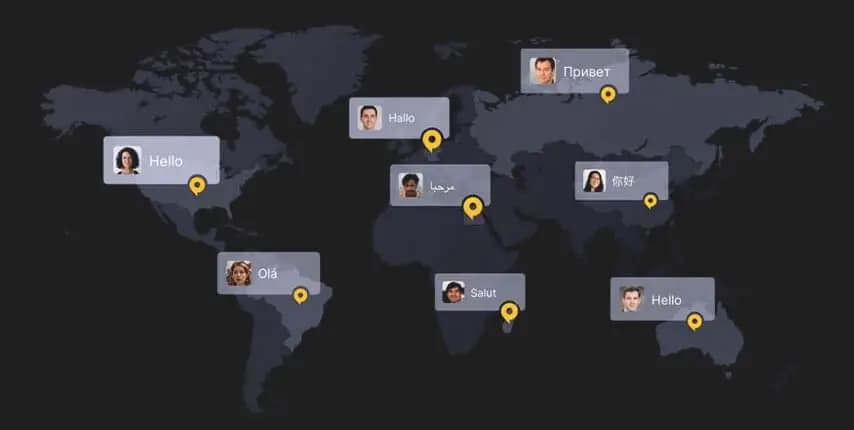Middle Eastern Languages Localization
The Middle East has a variety of languages and cultures that rarely exist together in one place. The MENA region consists of 17 countries and covers an area of approximately 2,782,860 miles. Its population exceeds 370 million people, the Middle East is an ethnically rich and diverse region where languages are an intrinsic aspect of its cultural identity.
The Middle East is a culturally diverse region. It is home to a rich mix of languages that belong to three major language families: Afro-Asiatic, Indo-European, and Turkic.
While some languages are native to the lands and people of the Middle East, other languages have been adopted from various corners of the world, which led to the creation of unique sounds, words and expressions. Arabic is one the region’s languages that stands out as it’s the most extensively spoken in the Middle East. However, The Middle Eastern Languages’ landscape is far from similar, as Persian (Farsi), Turkish, Berber, and Kurdish rank among the top five most widely used languages.
The Middle Eastern languages speakers are a significant target for global businesses. The Middle Eastern markets continue to grow in value, Arabic localization and middle eastern languages localization have emerged as essential strategies for companies operating outside the region that claim expansion in the region.
Businesses can effectively communicate with their Middle Eastern audience and establish deeper connections and trust when communicating in the languages of the Middle Eastern audience. This approach enhances the user experience and supports the growth of global brands in the MENA dynamic market.
The Top 4 Most Widely Used Middle Eastern Languages
1. Arabic Language:

Arabic Language alphabet
The local spoken Arabic dialect is the first language children learn at home and use every day with family and friends. Formal Modern Standard Arabic (MSA) comes later through schooling. MSA is the written Arabic language that is used in newspapers, government documents, books, and academic journals. It’s the standard form used in writing, regardless of the spoken dialect in the middle east.
There are 25 countries that claim Arabic as an official or co-official language: Algeria, Bahrain, Chad, Comoros, Djibouti, Egypt, Eritrea, Iraq, Jordan, Kuwait, Lebanon, Libya, Mauritania, Morocco, Oman, Palestine, Qatar, Saudi Arabia, Somalia, Sudan, Syria, Tanzania, Tunisia, United Arab Emirates and Yemen.
Yet each of them has its own dialects that are unique and vary from one country to another. To reach the right audience, using the dialect is crucial.
Here’re some of the dialects that are commonly used in the Arab world:
Coptic Egyptian was the predominant language of Egypt prior to the Muslim conquest of the region in the 7th century. Today’s Egyptian Arabic is heavily influenced by the Coptic Egyptian predominant language that was the prevailing language in the region before the Muslim conquest of Egypt in the 7th century.
Egyptian Arabic is the most widely spoken variety of Arabic. It is perfectly understood across most of the Arab world due to the dominance of Egyptian influence in the region, as well as Egyptian media including Egyptian cinema that had a big influence on the MENA region.
Arabic Localization and Arabic Dialects. Is It a Challenge?
As presented before there are different Arabic dialects in the region, and using one dialect when targeting Arabic audience could affect your sales and business growth. This is why it’s important to do your market research very well, choosing the right dialect and start the Arabic localization process of your product.
Many brands new to the Arab market start translating their content into Modern Standard Arabic (MSA), which is the formal version of the Arabic language. MSA is suitable for official, formal communications. Yet, it is not the language used in everyday communications. Lots of businesses require using specific dialects in their Arabic localization specially in some materials such as marketing and media.
Global marketing and media require effective communication with Arabic audiences. This is where Arabic localization and marketing materials adaptation play a crucial role in brand message and brand voice adaptation to diverse audiences with varying cultural preferences and languages. Tailoring Arabic marketing content that suits the local culture has the power to help businesses to resonate with customers, build brand loyalty, and drive success in foreign Arabic markets.
Using the right Arabic dialect in marketing localization makes the content understandable and demonstrates respect for the local culture.
| Word | Pronunciation | Translation |
|---|---|---|
| كَتَبَ | kataba | he wrote |
| كَتَبَت | katabat | she wrote |
| كَتَبْنَا | katabnaa | we wrote |
| كَتَبْتُ | katabtu | I wrote |
| كَتَبْتِ | katabti | you (female) wrote |
| كَتَبْتَ | katabta | you (male) wrote |
Arabic is one the Middle Eastern languages that is considered an RTL language (written and read from right to left). Not taking care of the Arabic localization formatting will lead to not displaying the final translation correctly.
– Font display issues in Arabic localization
Changing fonts in finalized Arabic localization might cause problems. In Microsoft Word, you generally can’t change Arabic text to a font that can’t display it properly. Word may try to automatically substitute a similar Arabic-capable font, but this can lead to slight encoding differences and incorrect character display.
– Issues with Arabic localization as an RTL (right to left)
Some softwares lack the functionality to handle the right-to-left language directionality and the outcome could be quite problematic. You might encounter blank spaces where the text should be, or even a jumbled, nonsensical display of characters. In some instances, the characters are being displayed in the wrong order, resulting in an inaccurate and confusing presentation.
– Number display problems in English to Arabic localization
So, the English number 1,234,567 would be written in Arabic as: ١٬٢٣٤٬٥٦٧ This may seem like a minor difference, but it can cause significant issues if not properly addressed during the translation and localization process. If the translated Arabic content is then pasted into a software program or document that is not properly configured to handle right-to-left number formatting, the result could be a jumbled, confusing display. The numbers might appear as: ٧٦٥٬٤٣٢١
Turkish Language:
Turkish is one of the most popular languages in the region. It’s not only spoken in Turkey. It is spoken in Northern Cyprus, where about 300,000 people use it as their first language. When considering those who speak Turkish as a second language, the total number of speakers can rise to around 90 million. This includes Turkish-speaking communities in various countries due to migration and diaspora, such as Germany and Bulgaria.
Turkish is one of the Middle Eastern languages that has 29 Latin characters. It has evolved significantly over the centuries, particularly during the Ottoman Empire. Turkish language absorbed numerous words from Persian and Arabic, making it a blend of different linguistic influences.
Turkish localization as a Middle Eastern language presents several challenges in its localization process.
Here are some of these challenges:
| Turkish Word | Breakdown | Meaning |
|---|---|---|
| evlerimizden | ev (house) + ler (plural suffix) + imiz (our) + den (from) | from our houses |
| gidiyormuşuz | gid (go) + iyor (present continuous suffix) + muş (past tense suffix) + uz (we) | gid (go) + iyor (present continuous suffix) + muş (past tense suffix) + uz (we) |
| Turkish Word | Breakdown | Meaning |
|---|---|---|
| evler | ev (house) + ler (plural suffix) | houses |
| kitaplar | kitap (book) + lar (plural suffix) | books |
| kalemler | kalem (pen) + ler (plural suffix) | pens |
| bardaklar | bardak (glass) + lar (plural suffix) | glasses |
| pencereler | pencere (window) + ler (plural suffix) | windows |
Turkish localization read left to right, which is different than most of the Middle Eastern languages. The Turkish market is a rapidly growing economy that have a population of over 90 million people. Most of the Turkish people only use Turkish language to communicate which is a challenge for international business that target the Turkish market.
Many businesses have taken Turkish localization seriously and have seen great success in the Turkish market. This including Netflix that created original content in Turkish language.
Persian Language (Farsi and Dari)
Farsi and Dari are two different dialects for Persian language which one of the oldest Middle Eastern languages. The majority Persian-speakers population are located in Asia in Iran and Afghanistan, and Pakistan. There is some diaspora in Turkey, the United States, Iraq, Canada and Saudi Arabia.
The Persian alphabet is written using a variant of the Arabic script. Persian language belongs to the Indo-Iranian branch of the Indo-European language family, while Arabic is a Semitic language.
Here are some of the similarities and differences between Arabic and Persian language:
Similarities between Arabic and Persian
| Feature | Arabic Alphabet | Persian Alphabet |
|---|---|---|
| Script | Both use the Arabic script | Both use the Arabic script |
| Directionality | Written from right to left | Written from right to left |
| Diacritics | Uses diacritics (tashkeel) for short vowels and pronunciation aids | Letters change shape based on position (initial, medial, final, isolated) |
| Common Letters | Many letters are common between both scripts (e.g., ب, ت, ج, م) | Many letters are common between both scripts (e.g., ب, ت, ج, م) |
| Feature | Arabic Alphabet | Persian Alphabet |
|---|---|---|
| script | Arabic script | Persian script (modified Arabic script) |
| Number of Letters | 28 letters | 32 letters |
| Additional Letters | None | 4 additional letters: پ (pe), چ (che), ژ (zhe), گ (gaf) |
| Phonetics | Contains sounds not found in Persian (e.g., ق /q/, ع /ʕ/) | Contains sounds not found in Arabic (e.g., پ /p/, چ /tʃ/, ژ /ʒ/) |
Kurdish Language:
Kurdish language is a Middle Eastern language that is an Indo-Iranian branch of the Indo- European languages with over than three dialects spoken by Kurdish peoples in the mountainous regions of Iraq, Iran, Syria, and Turkey. The number of Kurdish speakers is over 26 million which is a good number for businesses that are targeting the middle east.
When localizing to Kurdish language, it’s essential to put its different dialects in mind.
Kurdish localization is crucial as there is different dialects for Kurdish language. Kurdish dialects are broken into three main groups: Northern Kurdish, Central Kurdish and Southern Kurdish.
Kurmanji: Northern Kurdish
Kurmanji is the Northern Kurdish dialect. It’s the most common Kurdish languge dialect. Kurdish is commonly spoken in regions across Turkey, Syria, and the Soviet Union. It’s also spoken in the far northern areas of Iranian and Iraqi Kurdistan. Kurmanji is spoken in Iraq too and known there as Behdini.
Kurmanji has phonetic characteristics that may not be present in other Kurdish language dialects. Kurmanji use of certain sounds such as the phonemes /ʒ/ and /ç/, which are pronounced differently than in Sorani, another major Kurdish dialect.
Kurmanji’s vocals have been influenced by Turkish due to geographical proximity and historical interactions. These interactions have affected everyday vocabulary, as well as terms related to modern life, technology and governance.
Sorani: Central Kurdish Language
The Central Kurdish language dialect. It is spoken by Kurds in parts of Iraq and Iran. Sorani dialect uses a modified version of the Arabic script, Sorani uses a modified version of the Arabic script, while Kurmanji uses the Latin alphabet. This is one of the most visible differences between the three Kurdish language dialects. Arabic language has affected Sorani’s vocabulary that makes it easier for Arabs to learn the language.
There are three different Kurdish language dialects that make a good percentage of the Middle Eastern languages speakers.
| Dialect Group | Dialect Name | Geographic Distribution | Key Features |
|---|---|---|---|
| Southern Kurdish | Pehlewani | Spoken primarily in Iran and parts of Iraq | Less commonly spoken, includes various sub-dialects. |
| Dimili | Zaza | Spoken in eastern Turkey | Considered a separate language by some, has distinct phonetic and grammatical features. |
| Gorani | Hewrami | Spoken in parts of Iran and Iraq | Shares similarities with both Sorani and Pehlewani, often classified as a separate dialect group |
Challenges in the Middle Eastern Languages Localization
The diversity of Middle Eastern languages made the localization very special. Here are some of the challenges in the middle eastern languages localization:
Here are some key challenges in localizing content for Middle Eastern languages:
The Middle Eastern Languages Diversity
Right-to-Left Scripts
Language Dialects
Cultural Sensitivity for Each Region
Technical Terminology for Middle Eastern Languages
Middle eastern languages have been a huge demand for businesses that seek growth in different region and Arabic localization had been a great assistant for those who their target audience is located in the region and so did the same other languages localization. Start your businesses localization and begin expanding in the global market.









